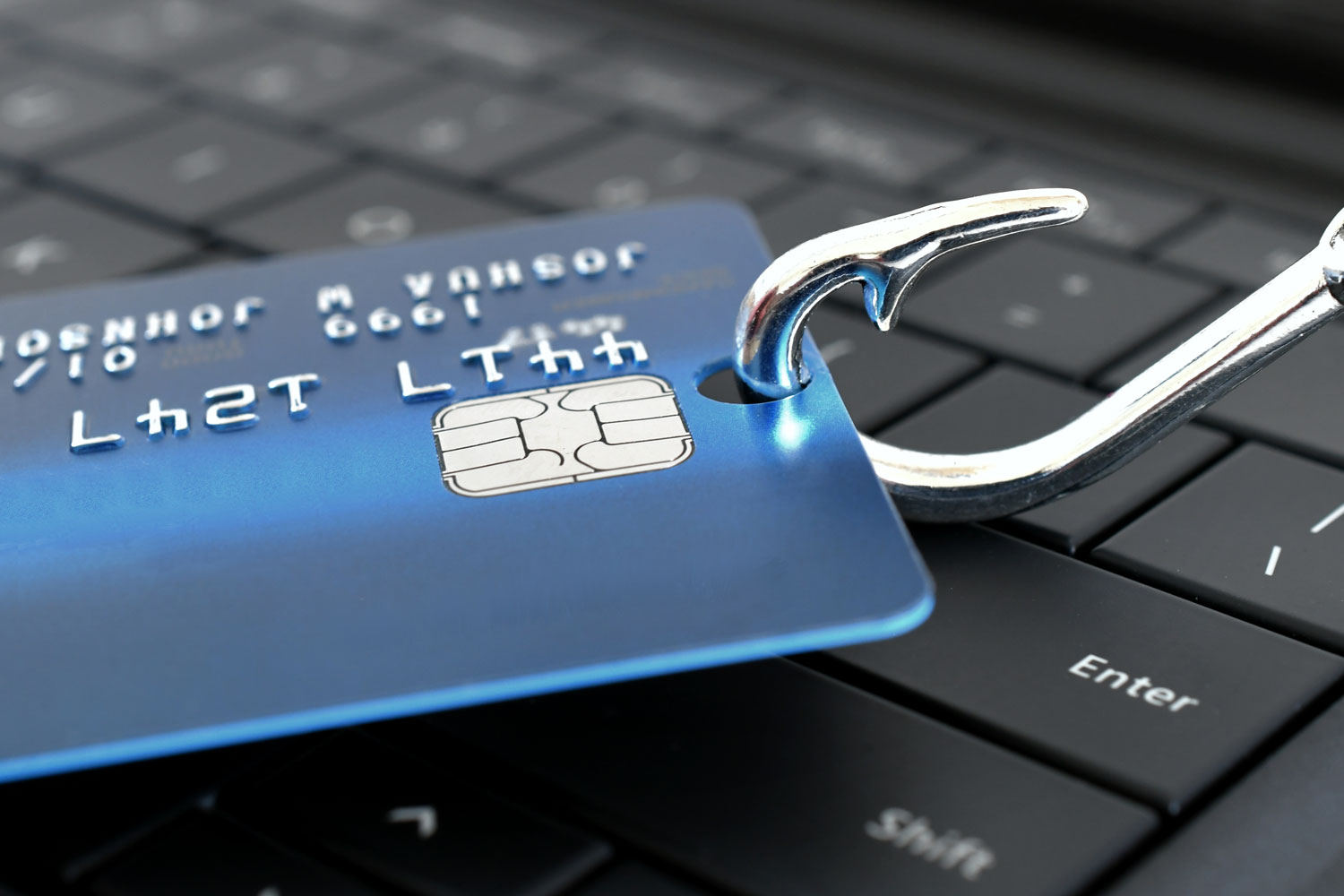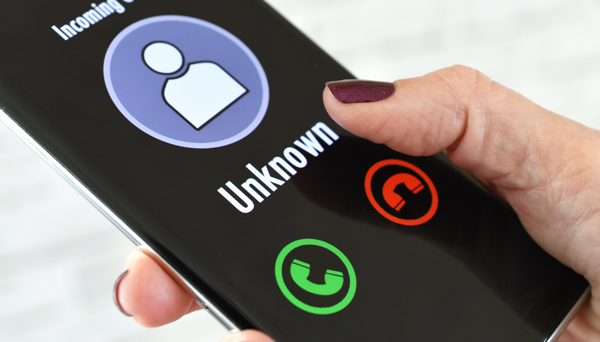
Scam Alerts
Confidence Crimes
The Pitch Is Perfect — The Pain Is Real

By Alex Ward, AARP Lead Volunteer for American Indian Outreach
For the past 30 years I have been providing training for the public and law enforcement regarding fraud and its impact on everyone. Many people underestimate the professionalism of cons. And con doesn’t stand for convict — what it stands for is confidence game.
Today’s cons are very sophisticated, and it almost isn’t worth talking about the various scams, because as soon as we start, 10 more scams appear, as if by magic. What is helpful, however, is discussing the red flags that help us determine whether we are being defrauded.
Getting Personal
One major red flag arises when a stranger calls and begins asking personal questions we should never answer. Hang up and stop talking as soon as you realize it’s a scam. I know, we often feel we are smarter than the con, but hear me now — we are not. Cons spend hours each day perfecting their pitches and are much better at pushing for a close than we are at preventing it.
AI for the Perfect Crime
We now recognize these bad actors are using artificial intelligence to thwart our strongest defenses. AI can be deployed in many ways, the simplest being to let it control the pitch. When that happens, AI writes the pitch to be more perfect than a person could create. It introduces just enough mistakes for the average person to move on, but keeps the less savvy viewer engaged. That guarantees the con reaches the person most likely to fall for it.
AI can also clone voices. In grandparent scams, scammers may clone the voice of a grandchild to deliver a seemingly foolproof pitch. That’s why it’s important for grandparents and grandchildren to have a code word they can — something known only to them — to confirm the caller is truly who they claim to be.
Caller ID Can Lie
AI isn’t the only thing that can make it easy for the con to be successful with the pitch. Cons can manipulate your phones, so when you look at your caller ID, it tells you what they want you to see.
For example, if you get a call from the IRS, and they say you owe back taxes and must pay them over the phone, don’t fall for it. IRS and other federal agencies do not collect taxes over the phone, no matter what your caller ID tells you.
Not All Money Is Equal
One other tip — don’t send money to a con using an unusual method of payment. Gift cards, Bitcoin, money grams, etc. are not safe ways to pay for anything.
Also remember, Bitcoin is considered a security, not traditional cash. That means it behaves more like an investment asset — similar to stocks or bonds — rather than money you can actually spend. If you don’t fully understand how Bitcoin works, especially how its value can fluctuate or how to store it safely, you’re at serious risk of losing your investment.
Clocking Your Confidence
Finally, don’t assume that talking longer will help you outsmart a scammer. Doesn’t happen. They are professionals, and the longer the conversation, the more likely you will fall for the pitch. They keep track of how long they keep you on the phone, which alone guarantees you will get more calls.
Best advice: If you don’t recognize the number, don’t pick up.
Past Issues

Scammers in 2025
Protecting Seniors from Evolving Threats
As our world grows more interconnected, fraud risks have become increasingly sophisticated. Older adults are targeted for their financial stability and trustworthiness, making awareness crucial. Here are some scams emerging in 2025 and strategies to combat them.
Emerging Scams
- Deepfake Impersonations: Scammers use advanced fake audio or video imitating loved ones, urging victims into quick financial actions.
- AI-Driven Phishing: Artificial intelligence creates highly personalized phishing attempts using details from public profiles, making them harder to spot.
- Cryptocurrency Fraud: Scammers offer fake investment opportunities with promises of guaranteed returns via convincing platforms.
- Subscription Scams: Many elders unknowingly fall into the trap of hidden subscriptions, where fraudsters sneak recurring charges into what seems like a one-time service.
- Energy Bill Scams: Fraudsters claim to represent utility companies, demanding immediate payments for fabricated “unpaid balances.”
Proactive Protection Strategies
- Leverage Trusted Technology: Install fraud detection tools and keep devices updated to prevent exploitation.
- Authenticate Beyond Words: Use personal codes or questions with family members to verify identity, avoiding impersonation schemes.
- Pause Before Action: Take time to think when encountering unexpected financial requests. Speak with a trusted advisor before making any decisions.
- Embrace Community Awareness: Join senior-focused workshops or discussions to stay informed about the latest scam tactics.
By staying informed and proactive, we can collectively strengthen our defenses against evolving fraud tactics.

Unmasking Scammers, One Red Flag at a Time
The Montana Fraud Watch Network
By Alex Ward
AARP Lead Volunteer for American Indian Outreach
Fraudsters are getting craftier by the day, but the Montana Fraud Watch Network is here to help you stay one step ahead. During International Fraud Awareness Week last November, three webcasts highlighted the Red Flags people need to recognize to avoid being victimized. By understanding these tactics, you can better protect yourself from scams.
Red Flags to Watch Out For
Unexpected or Unsolicited Communications: Be cautious of unexpected emails or phone calls, especially if they ask for money or personal information. It’s usually best to let unsolicited calls go to voicemail so you can assess their legitimacy.
- Too-Good-to-Be-True Offers: If an investment opportunity or deal sounds too good to be true, it probably is. Be skeptical of risk-free guarantees; they often mask hidden dangers.
- Non-Traditional Payments: Scammers often request payment through unconventional means, such as gift cards. For instance, the IRS will never ask for back taxes to be paid with an iTunes gift card.
- Scare Tactics and Urgency: Fraudsters use fear and pressure to make individuals act quickly. If someone is rushing you to make a decision, it’s likely a scam. They also employ scare tactics to jolt you into making hasty decisions.
- Requests for Personal Information: Legitimate organizations, especially federal agencies, will not ask for information they already have. Be vigilant about protecting your personal data, even if it seems harmless.
- Compelled Silence: Scammers want their schemes to be kept secret. If someone tells you not to discuss their offer with anyone else, it’s a major red flag.
These red flags are powerful tools when combined with real-life case studies, showing how easy it can be for criminals to victimize individuals. Remember, one can never be too careful with their personal information.
Take Action
Stay informed and protect yourself from fraud by watching the Fraud Awareness Webinar. For additional resources, refer to the following websites:
- Montana Commissioner of Securities & Insurance
- Internet Crimes Complaint Center
- AARP Montana
- AARP Fraud Watch Network
Report any fraudulent activity to these agencies and stay safe!
Introducing "The Fraudsters"
Montana's New Frontline Against Scams

By Alex Ward
AARP Lead Volunteer for American Indian Outreach
Fraud is on the rise, and Montana’s seniors are often targets. But a coalition of experts — dubbed “The Fraudsters” — is here to help you fight back.
The group, including the FBI, AARP, the Montana Commissioner of Securities and Insurance (CSI), and the Senior Medicare Patrol (SMP), is pooling resources to protect Montanans from scams.
The Fraudsters’ mission is simple: to make it easier for people to recognize the red flags that are common across various types of fraud. With so many different scams circulating, it’s easy to feel overwhelmed.
By focusing on these key warning signs, the group aims to simplify fraud prevention.Their first major outreach effort will take place during International Fraud Awareness Week, November 17-23, 2024.
Webinars and events will be scheduled to provide practical tips and strategies for staying safe. Keep an eye on the SMP offices at your local Area Agency on Aging, the Montana CSI website, and AARP Montana's website for details.
Each presenter brings extensive experience in fraud prevention.
Rebecca Leary, an Outreach Specialist with the FBI, helped organize the initiative. Kari Weber, a forensic accountant with the FBI, specializes in financial exploitation. Rene LaBrie Shanks, director of Montana’s SMP, works to prevent Medicare fraud. Blair Stapleton, who works with the CSI, focuses on securities and insurance fraud, and Al Ward represents AARP Montana’s Fraud Watch Network.
Scammers are getting more sophisticated, and no one is immune. They excel at creating confusion and manipulating emotions, making it easy for even savvy individuals to fall victim.
Staying informed and knowing what to watch for will help you protect yourself and those you care about from becoming the next target.
Unmasking the Con: How to Protect Yourself from Fraud

By Alex Ward
Unfortunately, as good Americans, we feel we can never be fooled. Having spent 26 years in Law Enforcement, I can tell you quite truthfully that we are very wrong. There is no better example of this phenomena than in the arena of Cons and Fraud.
Confidence Games
Most of us don’t know where the term con comes from — some probably connect it with convicts in prison, but that is not the case. The term comes from what we used to teach in Police Academies — “Confidence Games.” The idea of the con is to convince us (often using information we give them) that they are good people — just like us, and that whatever they say must be true.
These criminals have further focused that idea to the point of talking about putting the victim into “the ether.” They do this in two ways. First, they suggest the victim is entitled to an unbelievable gift — so large they can’t even imagine it. Or second, they get the victim to believe they are about to go to jail, or a family member or friend is in dire straits. In either of these cases, the victim is overwhelmed and likely not thinking clearly and may fall for the pitch.
I’ve been watching con pitches for the past 40 years and can say cons are experts at second guessing the victim. They can in a few moments on the phone (or internet, or social media, or via text) tailor their pitch to draw in the victim and convince them they should be heard.
Organized Crime Groups
These criminals are often part of very organized criminal groups. Recently, the MGM Grand in Las Vegas was brought to its knees by two very organized criminal enterprises using ransomware to take over all their computers. They asked for $17 million, which the MGM Grand refused to pay. They instead chose to bring in technicians to rebuild their protection. This cost them most likely $100 million, but they at least hadn’t given up the money to terrorists.
The two groups involved in this ransomware attack were Scattered Spider, which is part of a large group (Black Cat - over 1000 people) who focus on cyber attacks, and ALPHV, which is of eastern European origin. These two groups, possibly working together, caused the attack.
This hack didn’t just cost the hotel/casino giant to lose money, but also individual guests as well. Their information was hijacked. It will certainly take months to know who all was victimized.
The interesting thing about the MGM Grand hijack is that it began with a Smishing phone call to IT. Smishing is a phishing cybersecurity attack carried out over mobile text messaging, also known as SMS phishing.
Protect Yourself
We need to understand much more about the various ways hackers get our information.
There are things you can do, aside from just hanging up, which I would recommend, but if you aren’t interested in that, here are four things that will reduce your chances of letting criminals take your money or information.
- Use multifactor authentication when allowing your account to be accessed. This is usually set up by your bank, credit card company, or other organizations you do business with.
- Use passwordless authentication. Again, this is set up by organizations you do business with. There are various ways to do this, and you can check with the organizations to decide which works best for you.
- Limit the number of “super administrators” that have complete access to your system.
- Use tougher authentication for extremely sensitive data.

